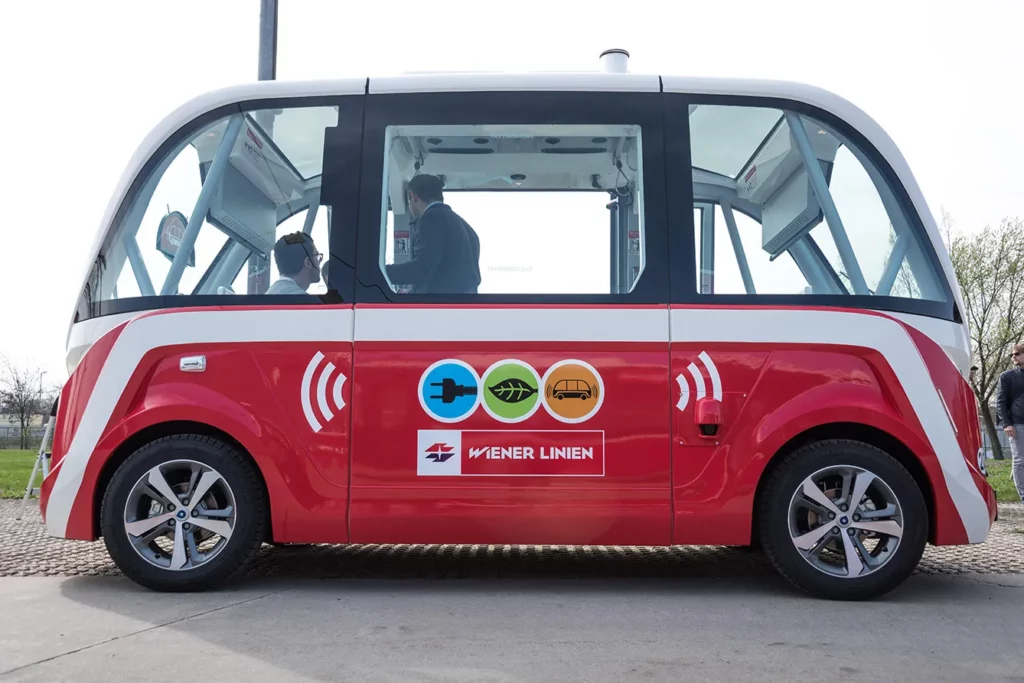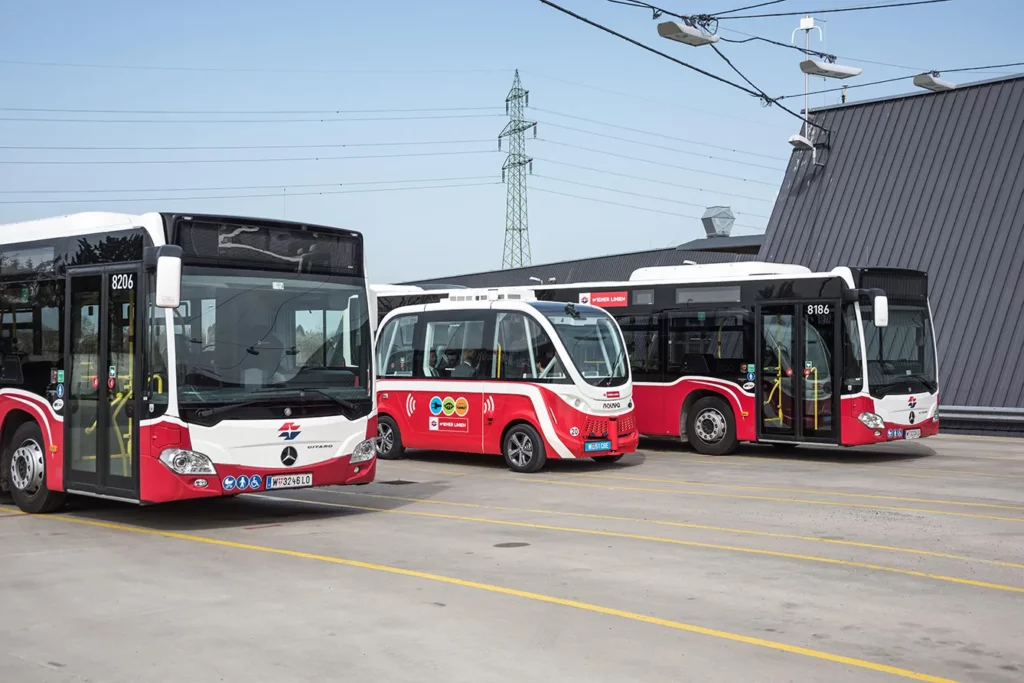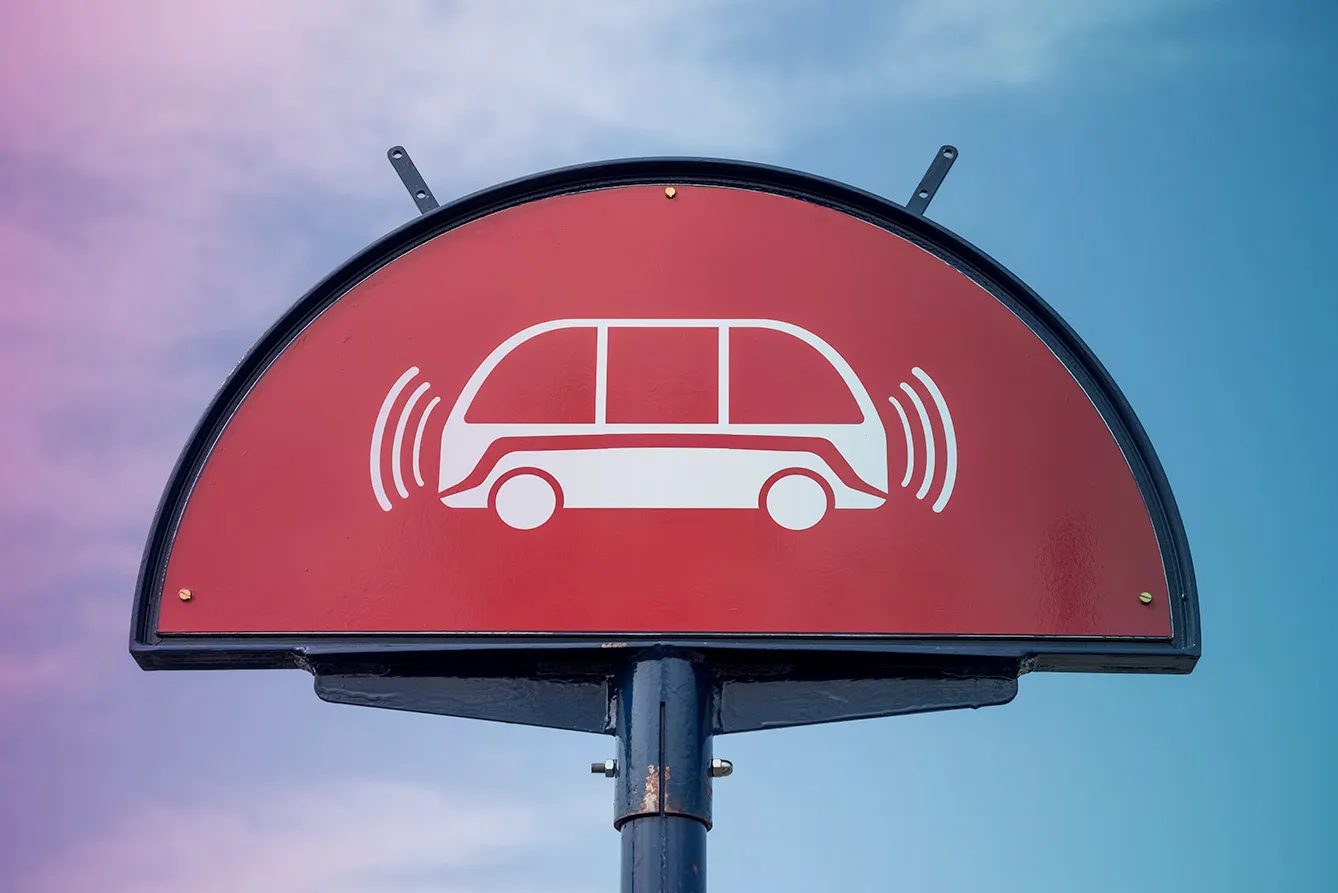Deep learning technology and AI are changing the transport sector. The best example of this in the 3-Seas Region is the presence of driverless buses in a newly developed section in Vienna. The new Seestadt quarter, which lies within the Aspern district, has grown around what used to be a military base and has had a subway operating for the last ten years. Three years ago, two driverless buses were introduced as a new means of transport to serve local residents around the subway station.
Driverless buses? But how!?
The driverless bus is one of the smallest buses in Vienna, able to carry up to 15 passengers. The two vehicles currently in use run on battery and can function for up to nine hours and travel at a speed of 20 km/h maximum. This means that the number of rides they make depends on the traffic and other circumstances. They do not have a fixed schedule, but instead, passengers can track their current movement through the official Wiener Lienen company website or via a QR code available at bus stops. The advantage is not only their convenience for short-distance travel but also the fact that they are the only free-of-charge transport in Vienna. That’s not even mentioning the fact that they are inclusive and environmentally friendly.
These autonomous vehicles do not have any of driving tools like pedals or steering wheels. Instead, they run on deep-learning programs that consist of detectors, cameras, and sensors used to navigate through the traffic. The specific GPS and 3D LiDAR sensors share signals with devices on traffic lights that help to coordinate the movement of the bus. This way, constant estimation of the vehicle’s position occurs, which coordinates its route within a process called odometry. Although self-driving, there are operators who are constantly informed about the bus, keeping an eye on it as it travels along its route.
Who is behind the project?
The bus model was designed by the French company Navya, which fouses on the construction and promotion of this autonomous vehicle as a future solution. Their models were awarded prestigious awards for endurance, reliability, and customer experience in 2019 when the bus was introduced in Vienna. The driverless bus is now using fourth-generation vehicles.
The implementation of the driverless bus in Vienna was overseen by several partners and stakeholders across the public and private sectors. These include the Austrian Ministry of Transport, Wiener Linien, the Austrian Institute of Technology, the Organization for Traffic Safety, TÜV Austria, and Siemens AG Österreich. Once manufactured by Navya, the bus model was deployed as a Wiener Linien vehicle in 2019 after one year of testing when it ‘learned’ the route it was to drive on. During the testing phase, the bus operated without passengers. The initial investment came at EUR 1.5 million.


Challenges
While in the testing phase, the bus hit a pedestrian, causing light injuries. As a consequence, the bus was garaged for one week, where its sensors were tested. It was concluded that it did react in time, in 1.6 seconds, and that it was the fault of the pedestrian who walked into his route wearing headphones that caused the collision. The bus has been in use ever since without further issues.
The pilot introduction of autonomous buses and other vehicles is ongoing in several parts of the world. Vienna, and perhaps Gdansk in Poland, could become the first in the region to enjoy the benefits of such transport as development continues.
The future
Currently, the challenge is to improve the cameras and detectors so that they are more agile in unfavorable weather conditions, confirmed Johannes Liebermann, a specialist in the field, on the Vienna Region website. For instance, heavy rain makes it hard for detectors to distinguish between individual inputs, which is why the buses do not fully work in these circumstances. Additionally, Libermann claims that 3D cameras will be installed to help better recognize obstacles and danger on the road. The automation of public transport vehicles will surely benefit from this experience, and it is expected that many more will be on motorways by 2040, confirmed Liebermann.
See Also: DeepL’s Translator Bridging Language Gaps Across the Globe







